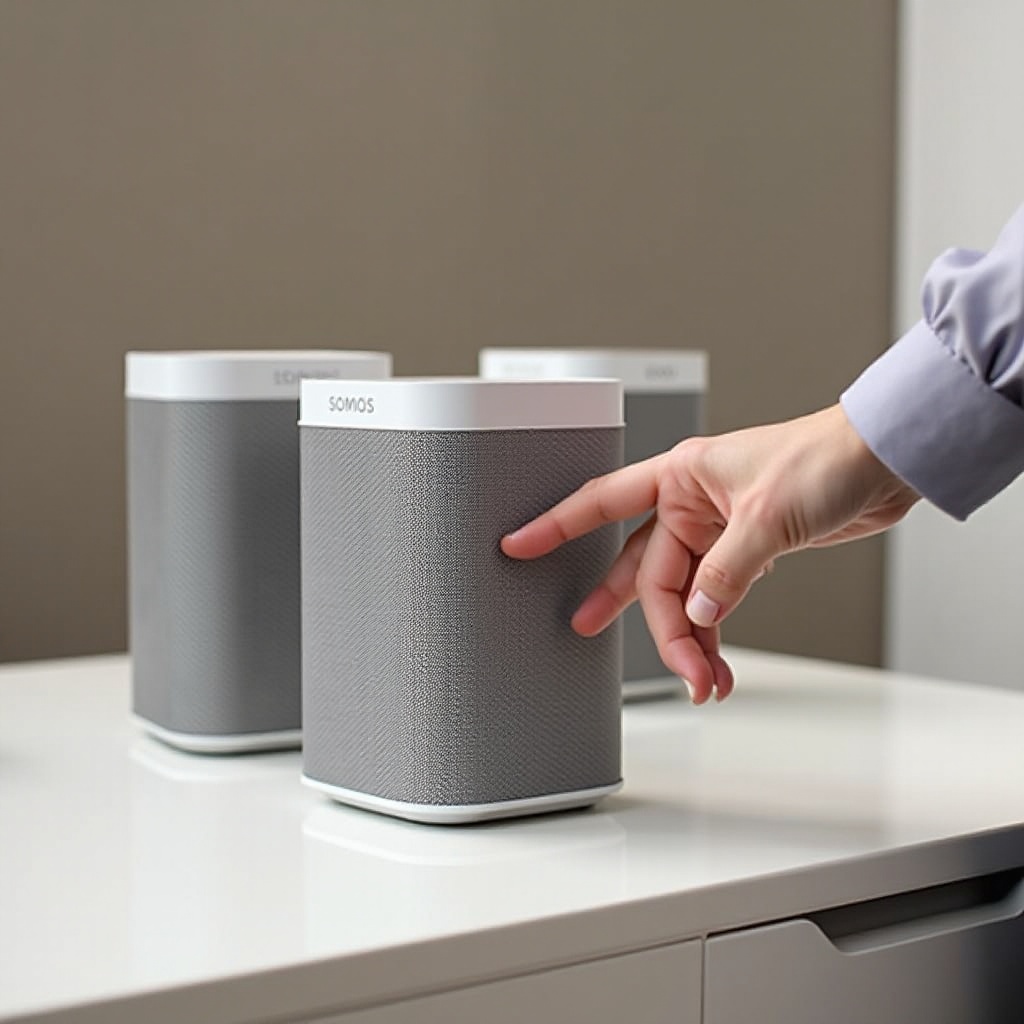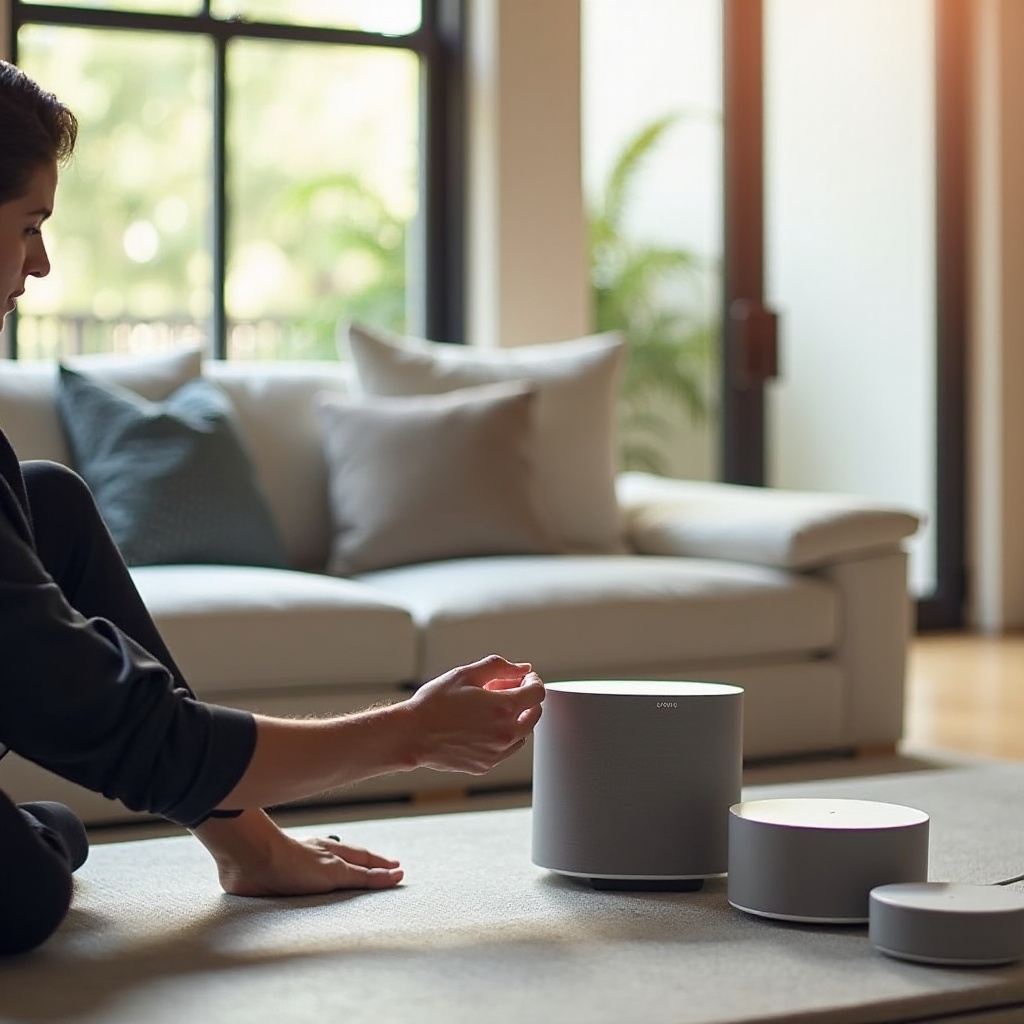How to Reset Sonos Speakers: The Complete Guide for a Fresh Start
Introduction
Resetting Sonos speakers can solve various technical issues and restore your system's performance. Whether you're troubleshooting an unresponsive device or preparing to pass it on to a new owner, understanding how to reset Sonos speakers is an essential skill. This guide will walk you through the different types of resets, offer clear instructions for each model, and provide useful tips to ensure your Sonos speakers continue working seamlessly.

Understanding the Basics of Sonos Resets
Before diving into the reset process, it is crucial to understand what resetting your Sonos speakers entails. Essentially, a reset will either restart the system (soft reset) or restore it to its factory settings (hard reset). Each type of reset serves a different purpose and may be necessary under different circumstances. Whether you're experiencing connectivity issues, audio problems, or simply trying to start fresh, resetting can provide a solution.
Why You Might Need to Reset Your Sonos Speakers
There are several reasons why you might need to reset your Sonos speakers: 1. Troubleshooting Issues: If your speakers fail to connect to the network, produce no sound, or show other signs of malfunction. 2. Ownership Transfer: Preparing the device for a new user by wiping personal settings and data. 3. Performance Refresh: Enhancing overall performance by clearing cache and temporary files.
Understanding the root cause of the issue will help determine whether a soft or hard reset is more appropriate.
Types of Resets
There are two main types of resets for Sonos speakers:
Soft Reset
A soft reset, or reboot, is a non-invasive method for resolving minor performance issues. It restarts the system without altering any personalized settings or data.
Hard Reset
A hard reset, or factory reset, restores the device to its original state. This method should be used when more significant problems persist or when preparing the speaker for resale or gifting.
Preparing for the Reset
Before starting the reset process, make sure to: 1. Identify the Speaker Model: Different models may require unique reset procedures. 2. Backup Important Data: If performing a hard reset, ensure that you've saved any crucial settings or data. 3. Check Firmware Updates: Sometimes, issues can be resolved with a simple update rather than a complete reset.
This preparation ensures a smooth reset process and minimizes potential data loss.
Step-by-Step Guide to Soft Reset Sonos Speakers
The steps to perform a soft reset will vary depending on the Sonos speaker model you own.
Sonos One, Beam, and Play:1 Soft Reset
- Unplug the power cord from the outlet.
- Wait for approximately 10 seconds.
- Plug the power cord back into the outlet.
- Allow the speaker to reboot fully, indicated by a solid white light.
Sonos Move and Play:5 Soft Reset
- Take the speaker off the charging base (for Sonos Move) or unplug it from the power source.
- Wait for about 10 seconds.
- Place the speaker back on the charging base or plug it back in.
- Wait for the light on the speaker to turn solid white, indicating the reboot is complete.
Step-by-Step Guide to Hard Reset Sonos Speakers
A hard reset will erase all data and return the speaker to its factory settings.
Sonos One, Beam, and Play:1 Hard Reset
- Unplug the speaker from the outlet.
- Hold down the Join button (usually located on the back or side of the speaker).
- While holding the Join button, plug the speaker back into the outlet.
- Continue holding the Join button until the light starts flashing amber and white.
- Release the button when the light begins to flash green, indicating a successful reset.
Sonos Move and Play:5 Hard Reset
- Remove the speaker from the charging base (for Sonos Move) or unplug it.
- Press and hold the Join button.
- While holding the Join button, place the speaker back on the charging base or plug it in.
- Continue holding the button until the LED light flashes amber and white.
- Release the button once the LED flashes green, showing the reset is complete.

Reconnecting and Testing Your Sonos Speakers
After performing the reset, follow these steps to reconnect and test your Sonos speakers: 1. Open the Sonos App: Ensure your app is up to date. 2. Add New Product: Navigate to the settings and select 'Add New Product. 3. Follow On-Screen Instructions: The app will guide you through the reconnection process. 4. Test Speaker Functionality: Play a track or a playlist to ensure everything is working correctly. Check each speaker to confirm they are all connected and functioning as expected.

Conclusion
Resetting your Sonos speakers can be a quick and effective solution to various issues. Understanding when and how to perform both soft and hard resets ensures you maintain the highest performance level. Whether troubleshooting, preparing for a new owner, or just seeking a fresh start, the steps provided in this guide will help you reset your Sonos speakers easily.
Frequently Asked Questions
How often should I reset my Sonos speakers?
You generally don't need to reset your Sonos speakers regularly. Only reset them if you're experiencing connectivity issues or other performance problems.
Will resetting my Sonos speakers delete all my settings?
A hard reset will delete all your settings, while a soft reset will only restart the system without removing personalized settings.
What should I do if my Sonos speakers still don't work after a reset?
If your Sonos speakers don't function correctly after a reset, check for firmware updates, revisit the setup instructions, or contact Sonos support for assistance.



